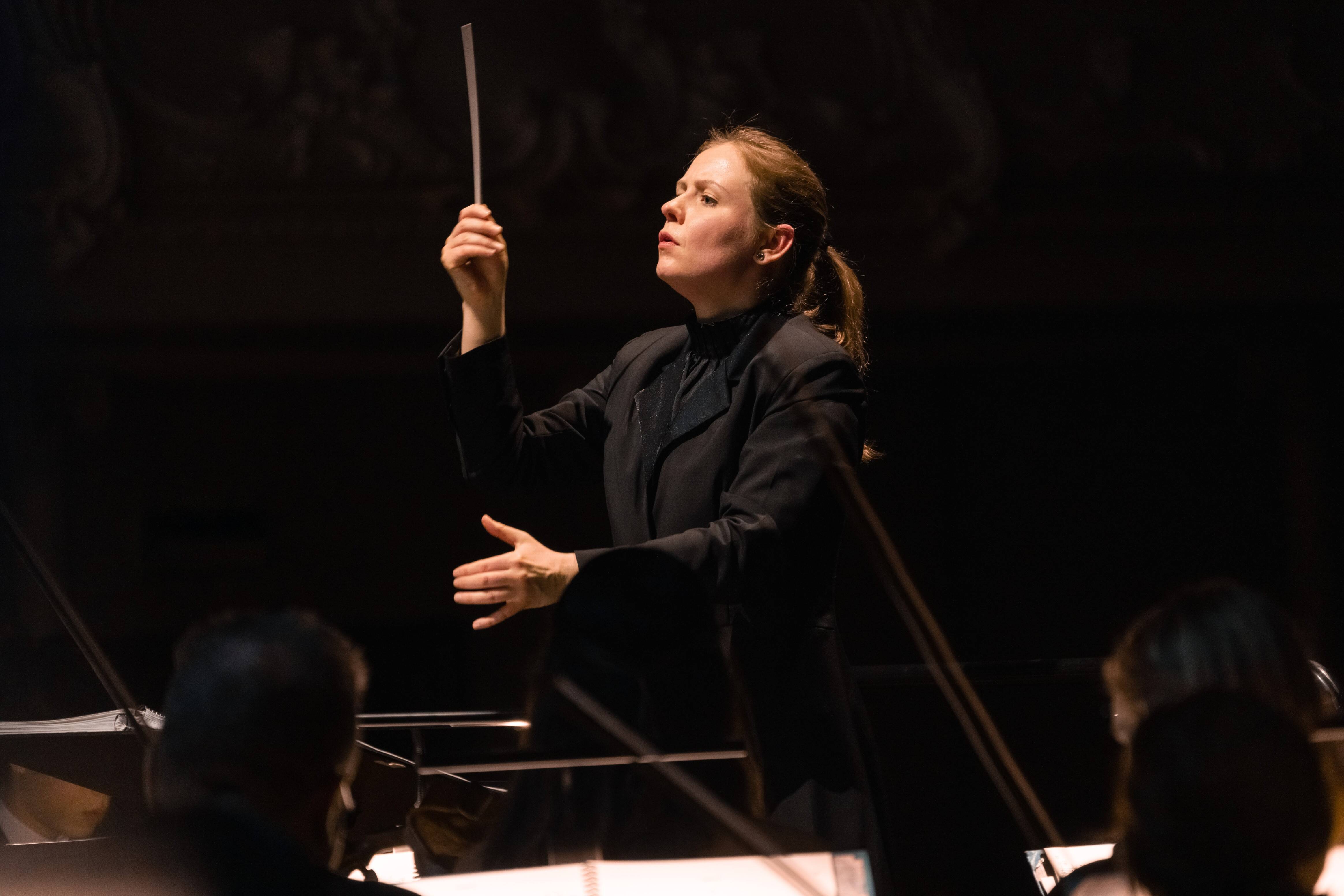New Zealand Symphony Orchestra’s Mahler 5 is “intelligent and emotional”
James Daly-Peoples, New Zealand Arts Review
Published: Friday 12 April, 2024

Image credit: Gemma New NZSO Artistic Advisor and Principal Conductor | Photo by Lattitude Creative
The opening work on the Mahler programme was Salina Fisher’s “Kintsugi” which was originally commissioned by the NZTrio. This augmented work relates to the Japanese art of repairing broken pottery and dusting the new work with gold.
The music focussed on the gaps in the pottery and the broken fragments of the pieces, highlighting the delicacy of the process as the pieces were slowly assembled.
The music seemed to describe the colours, textures and contours of the bowl or vase with Bridget Douglas’s flute describing curvaceous shapes. The orchestra then picked out the seams of the material bonding the broken shards and the shimmering gold.
While describing the physical changes in the pottery the work with its delicate, brittle sounds acted as a metaphor the ability of humans to mends broken bodies and damaged minds.
The American composer Adam Schoenberg’s Percussion Concerto “Losing Earth” was a dazzling work inspired the climate catastrophe threatening our natural world with musical images of cities being inundated by rising oceans.
The work opened with the sounds of gunshots from drums which were placed around the auditorium. These sporadic salvos, warnings of a present danger were followed by subterranean groaning of the horns which also suggested looming disaster. This was followed by collisions of the strings and horns against the percussion section.
The audiences was then treated to a remarkable display from Jacob Nissly the soloist who is the San Francisco Symphony’s Principal Percussionist. From his first appearance at the front of the hall playing a snare drum he combined the style of a professional percussion player and that of an outlandish rock band drummer.
At his disposal was an array of instruments; drums, gongs marimba, wood blocks and cymbals with which he and the orchestra created the images of an encroaching ocean with the murmuring strings and brass backgrounding Nissly’s s sonic wonderland. This all ended with his making one final display using a spinning Roto Sound cymbal which emitted an eerie sound as the earth-like globe spun to its whispering end.
Where “Losing Earth” addressed a crucial time in the physical nature of our world , Mahler’s Fifth Symphony addressed a crucial time in the composer’s personal world. The work was written at time when he had a near death experience, his career was blossoming but there many detractors and it was also the time he met future wife. It is these personal and psychological issues the fears, anxieties and pleasures of his life which form the basis of the work and we were presented with the man and his attempts to understand and explore his inner psychological struggles, endeavourimg to express himself through his music in a way few other composers have managed to achieve.
While it is an autobiographical work exploring the composer’s personality, there are parallel themes as he depicts narratives, landscapes and other emotion states.
The measure of a great performance is the way in which these aspects of the composer’s life are realized by the conductor and the orchestra. Conductor Gemma New and the NZSO certainly achieved it with an intelligent and emotional performance.
From the opening trumpet blast to the final triumphant conclusion New was firmly in control of the orchestra, understanding the drama, inventions and contrasts of the music. She seemed by turns, a battling duellist, a lithe dancers and meticulous guide. Subtle nuances were made evident and individual instruments were allowed to shine. Even the long silences between the movements became part of the music, allowing the audience to reflect on each of the previous movements.
New managed to give the blaring, brass opening funereal march a sense of desolation while the singing strings provided a sense of optimism. This romantic reflective mood depicted the man trapped between despair and hope.
In the second movement New seemed to be battling the ferocious sounds of the orchestra and the nightmarish, reckless drama of the music before it morphed into quiet reverie, bringing out nuances and subtleties that seemed to explore the tragedy and triumphs of human and personal history and she allowed the interweaving of the solo violin, the brass and the strings to give the work an intense melancholy.
The final two movements, which included the famous adagio for strings which is considered to be something of a love letter to his wife Alma Schindler, were delivered perfectly filled with an aching sense of love and loss.
The final movement was filled with changing moods, alive with bright woodwinds and brass. New led the orchestra in a brilliantly controlled finale where the doors of perception open and the funeral tones of much of the work are replaced by more exultant sounds offering hope and renewal.
